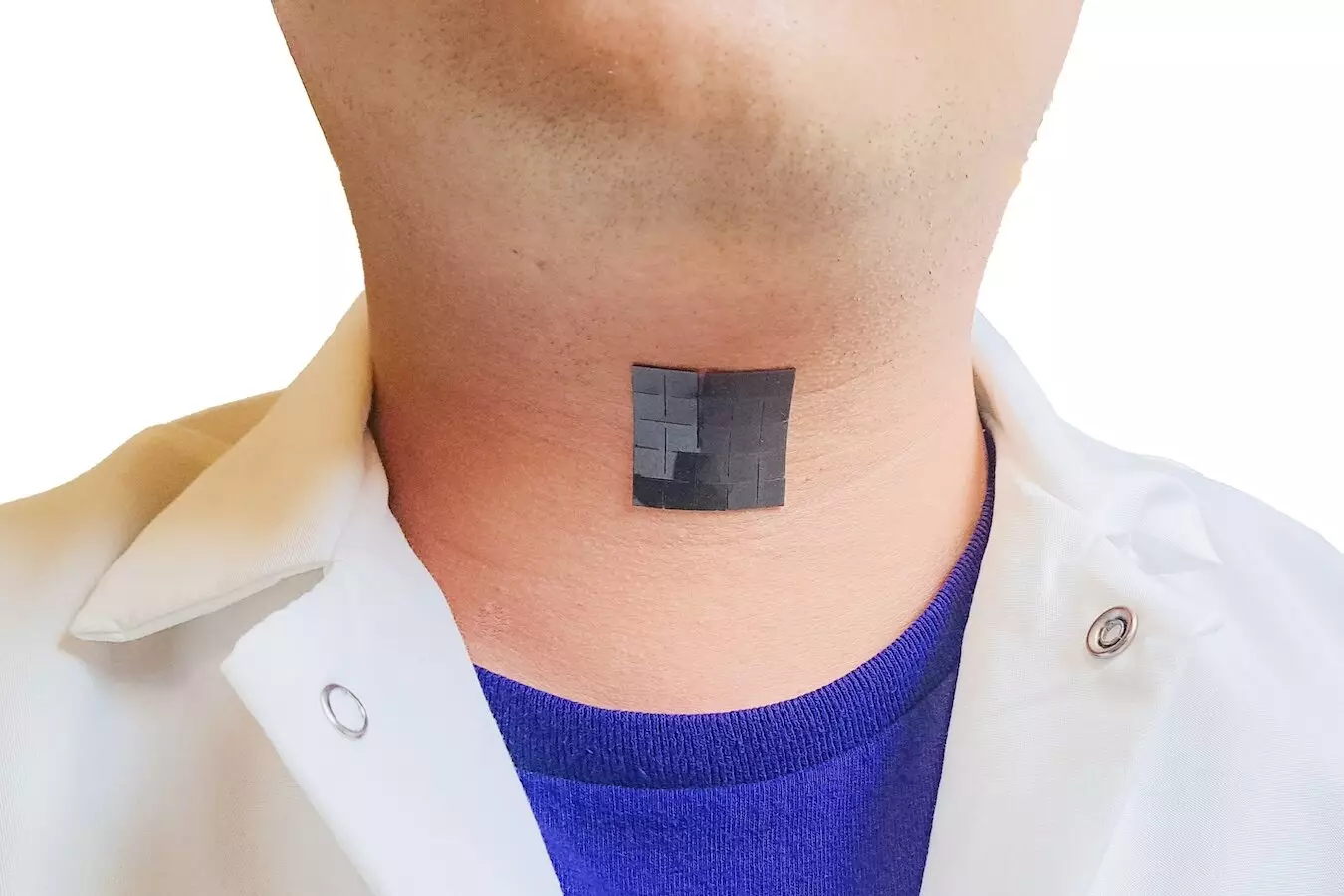People suffering from voice disorders due to various conditions like pathological vocal cord issues or laryngeal surgeries face immense challenges in communicating verbally. However, a groundbreaking invention by a team of UCLA engineers may soon change the game for these individuals. The innovative device, detailed in the journal Nature Communications, is a small, soft, thin, and stretchy patch that can be attached externally to the throat to assist individuals in regaining their voice function.
The new bioelectric system developed by Jun Chen and his team at the UCLA Samueli School of Engineering is equipped with the ability to detect movements in the larynx muscles and convert these signals into audible speech with the help of machine-learning technology. This revolutionary system boasts an impressive accuracy rate of nearly 95%, making it a promising solution for those with voice-related disabilities. The device consists of two main components – a sensing component and an actuation component – each equipped with layers of biocompatible silicone compound and magnetic induction coils to facilitate the translation of muscle movements into speech signals.
Voice disorders are not uncommon, affecting people of all ages and backgrounds. Research indicates that approximately 30% of individuals will experience a voice disorder at some point in their lives, emphasizing the widespread need for effective solutions. Traditional approaches to voice recovery, such as surgical procedures and voice therapy, can be time-consuming and invasive, often requiring extended periods of postoperative rest. The new wearable device offers a non-invasive, user-friendly alternative to existing solutions, enabling patients to communicate effectively during the pre- and post-treatment phases of voice disorders.
In preliminary experiments, the research team tested the device on healthy adults, demonstrating its ability to accurately detect and translate laryngeal muscle movements into voice signals. The machine-learning algorithm implemented in the device achieved an impressive prediction accuracy of 94.68%, showcasing its potential as a reliable tool for communication. Moving forward, the team plans to expand the device’s vocabulary through continued machine learning and conduct trials with individuals experiencing speech disorders. The innovative technology holds promise for revolutionizing communication for those with vocal impairments, offering a ray of hope in an otherwise challenging journey.
The new voice restoration device developed by UCLA engineers represents a significant milestone in the field of assistive technology for individuals with voice disorders. By leveraging advanced bioelectric systems and machine-learning algorithms, this innovative device has the potential to transform the lives of those struggling to communicate due to vocal impairments. As ongoing research and development efforts continue, the future looks bright for individuals seeking effective and non-invasive solutions for voice restoration.



Leave a Reply